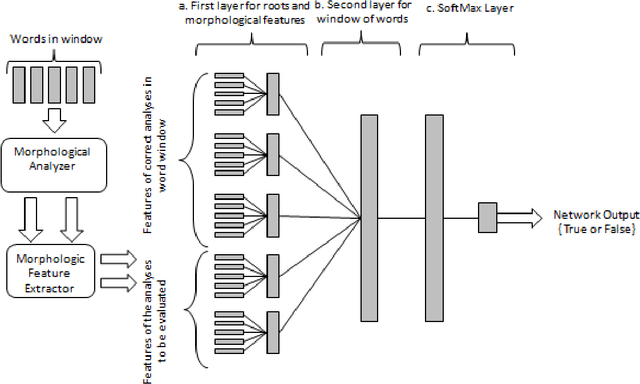A Morphology-aware Network for Morphological Disambiguation
Paper and Code
Feb 13, 2017



Agglutinative languages such as Turkish, Finnish and Hungarian require morphological disambiguation before further processing due to the complex morphology of words. A morphological disambiguator is used to select the correct morphological analysis of a word. Morphological disambiguation is important because it generally is one of the first steps of natural language processing and its performance affects subsequent analyses. In this paper, we propose a system that uses deep learning techniques for morphological disambiguation. Many of the state-of-the-art results in computer vision, speech recognition and natural language processing have been obtained through deep learning models. However, applying deep learning techniques to morphologically rich languages is not well studied. In this work, while we focus on Turkish morphological disambiguation we also present results for French and German in order to show that the proposed architecture achieves high accuracy with no language-specific feature engineering or additional resource. In the experiments, we achieve 84.12, 88.35 and 93.78 morphological disambiguation accuracy among the ambiguous words for Turkish, German and French respectively.
 Add to Chrome
Add to Chrome Add to Firefox
Add to Firefox Add to Edge
Add to Edge